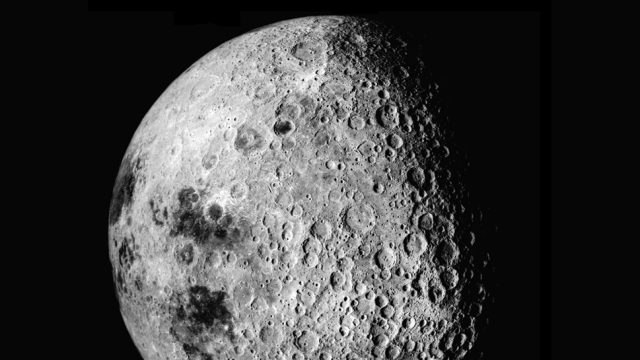For the first time in astronomical history, a space-based radio telescope is gathering data from the Moon’s far side, in a location free from Earth’s interference. This collaboration between China and the Netherlands could provide new insights into the conditions of the early universe.
The instrument, called the Netherlands-China Low Frequency Explorer (NCLE), is located on Queqiao, a Chinese communications satellite that was launched in support of the Chang’e 4 mission, the first soft-landing and robotic mission to the lunar far side. NCLE was developed in the Netherlands by Radboud University, ASTRON, and ISISpace, along with support from Netherland’s Space Office.
Queqiao is currently located around 450,000 kilometres from Earth, and it’s positioned in a halo orbit that keeps the satellite in the Earth-Moon L2 Lagrange point (so the satellite stays behind the Moon from our perspective, never coming between Earth and Moon).
Until now, Queqiao provided telecommunications service for the Chang’e 4 mission, acting as a relay station between the Yutu 2 lander and China’s project control centre on Earth. The Dutch-Chinese telescope radio telescope has been dormant since it was launched in May 2018.
The NCLE device was supposed to have been deployed a few months ago, but it was delayed owing to the tremendous success of the Chang’e 4 mission, which wasn’t expected to last beyond March 2019.
The China National Space Administration (CNSA) has now decided to move on to the next stage of the mission and convert Queqiao into an observatory for radio astronomy, according to a Radboud University press release. Three antennas have now been partially unfurled, allowing for radio scans of space—without pesky interference from Earth’s atmosphere.
“We are finally in business and have a radio-astronomy instrument of Dutch origin in space,” said Heino Falcke of Radboud University in the press release. “The team has worked incredibly hard, and the first data will reveal how well the instrument truly performs.”
The NCLE should be able to detect super-faint radio signals, which it will do with its three 5-metre-long antennas, which work in the 80 kHz to 80 MHz radio frequency range, according to ISISpace, a dutch satellite manufacturer involved in the mission.
Scientists are hoping to capture radio signals associated with the universe’s Dark Age—the period immediately following the Big Bang, before the birth of stars. Radio signals from this embryonic era are “considered to be the holy grail of cosmology,” according to ISISpace. These ancient signals are largely undetectable from Earth, as they’re blocked by our planet’s atmosphere. Radio data from the Dark Age could reveal new insights into the first stars and galaxies, as well as dark matter and dark energy, which are still poorly understood cosmological phenomena.
The unfurling of the three antennas, which were packed inside Queqiao, was not a smooth process, according to the press release:
The longer stay behind the moon most probably did have an effect on the antennas. At first, the antennas unfolded smoothly, but as the process progressed, it became increasingly difficult.
The team therefore decided to collect data first and perhaps unfold the antennas further at a later point in time. With these shorter antennas, the instrument is sensitive to signals from around 800 million years after the Big Bang. Once unfolded to their full length, they will be able to capture signals from just after the Big Bang.
Further details weren’t given about the anomaly, but video of the NCLE antenna deployment in a laboratory setting can be seen here.
Hopefully this won’t be an ongoing problem, and the team will be able to extend the antennas to their full position without further issue. The Chang’e 4 mission has presented a really neat opportunity for scientists to collect data that would otherwise remain invisible to us. We eagerly await the results of this exciting next phase in the mission.
